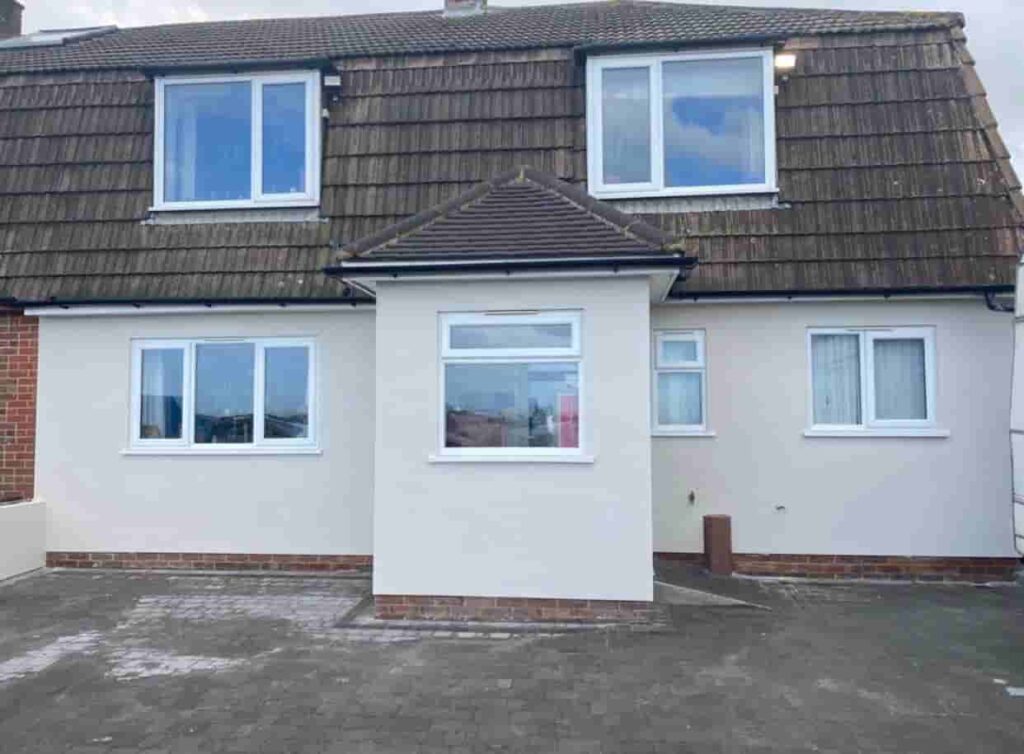Pitched roofs are a common and reliable feature on many homes, offering excellent drainage and protection against the elements. However, like any part of a building, pitched roofs can develop issues over time. These problems often start small but can escalate into significant damage if left unaddressed. At Newark on Trent Roofing Repairs, we understand the importance of maintaining your roof to avoid costly repairs and protect your property. In this post, we’ll explore common pitched roof problems that can sneak up on homeowners and offer tips on how to prevent them.
1. Loose or Missing Tiles
One of the most frequent issues with pitched roofs is loose or missing tiles. This can occur due to high winds, storms, or general wear and tear over time. While a single missing tile might not seem like a major concern, it can leave your roof vulnerable to water damage, leading to leaks and potentially causing damage to the roof’s structure.
Prevention: Regular inspections, particularly after storms or heavy weather, can help catch loose or missing tiles early. Prompt replacement of damaged tiles by professionals like Newark on Trent Roofing Repairs ensures your roof remains secure and watertight.
2. Damaged Flashing
Flashing is used to seal joints and edges around chimneys, vents, and other roof penetrations. Over time, flashing can become cracked, corroded, or displaced, allowing water to seep in. This can cause leaks, dampness, and even structural damage if not addressed.
Prevention: Inspect the flashing regularly to ensure it is in good condition. If you notice any signs of wear or damage, have it repaired or replaced promptly to maintain a watertight seal.
3. Blocked Gutters and Downspouts
Pitched roofs rely on efficient drainage systems to channel water away from the roof and prevent pooling. Blocked gutters and downspouts can cause water to back up, leading to overflow and leaks. Over time, this can damage the fascia, soffits, and even the foundation of your home.
Prevention: Clean gutters and downspouts regularly, especially during the autumn months when leaves and debris can accumulate. If you notice water pooling around your roofline, it may be a sign that your drainage system needs attention.
4. Sagging Rooflines
Sagging rooflines are often a sign of underlying structural issues. This can occur due to water damage, poor roof design, or weakened rafters over time. A sagging roof can lead to further problems, including leaks and structural instability.
Prevention: If you notice any dips or sagging in your roofline, it’s essential to contact a professional roofer for an inspection. Addressing the issue early can prevent more extensive (and expensive) damage down the line.
5. Roof Leaks and Moisture Build-Up
Even small leaks in a pitched roof can lead to significant damage over time. Water infiltration can cause rot, mould, and mildew, affecting the internal structure of your home and potentially leading to health concerns.
Prevention: Regular inspections are key to spotting leaks before they become a serious issue. Look for water stains on ceilings or walls, damp patches in the attic, or unusual odours that could indicate moisture build-up.
6. Moss and Algae Growth
Moss and algae can grow on the surface of a pitched roof, particularly in areas that don’t receive much sunlight. While this may seem like a cosmetic issue, moss retains moisture, which can weaken tiles and cause them to crack or dislodge. Over time, moss and algae growth can compromise the roof’s structural integrity.
Prevention: Keep your roof free from moss and algae by having it professionally cleaned if needed. Installing copper or zinc strips along the roofline can also help prevent moss from growing.
7. Inadequate Ventilation
Proper ventilation is crucial for maintaining the health of your roof. Poor ventilation can lead to a build-up of heat and moisture in the attic, which can weaken the roof structure and lead to condensation, mould, and damage to insulation.
Prevention: Ensure your attic has sufficient ventilation to allow for proper airflow. This helps regulate temperature and moisture levels, preventing damage to your roof and extending its lifespan.
How to Stop Pitched Roof Problems Before They Start
The best way to avoid costly repairs is through regular maintenance and timely inspections. Here are a few tips to help prevent pitched roof problems from escalating:
- Schedule Regular Inspections: Having your roof professionally inspected at least once a year, or after significant weather events, can help catch small issues before they become major problems.
- Perform Preventive Maintenance: Simple tasks such as cleaning gutters, checking for missing tiles, and inspecting the attic for signs of moisture can go a long way in preventing damage.
- Address Issues Promptly: If you notice any signs of roof damage, such as leaks, missing tiles, or sagging, it’s crucial to act quickly. Prompt repairs can save you from more significant (and expensive) problems in the future.
At Newark on Trent Roofing Repairs, we specialise in identifying and repairing pitched roof problems before they worsen. Our experienced team can help you maintain the integrity of your roof, ensuring your home stays protected and secure for years to come.
Conclusion
Pitched roof problems can develop gradually, but they often lead to costly repairs if left unaddressed. From loose tiles to sagging rooflines, understanding the early signs of roof damage can help homeowners take preventive action. At Newark on Trent Roofing Repairs, we provide professional roofing services in Newark on Trent, Nottingham, ensuring your roof remains in excellent condition with minimal disruption to your daily life.
Call us on: 01636 556 194
Click here to find out more about Newark on Trent Roofing Repairs
Click here to complete our contact form and see how we can help with your roofing needs.

